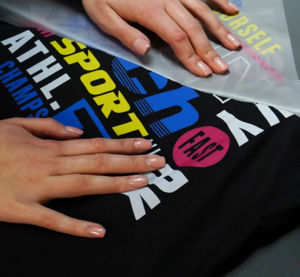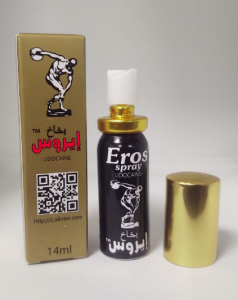Are you ready to elevate your printing game? DTF heat transfers are taking the world of custom apparel by storm, and for good reason. This innovative printing method allows you to create vibrant, high-quality designs that adhere seamlessly to a variety of fabrics. Whether you're a small business owner looking to expand your product range or just someone who loves crafting unique pieces, understanding DTF heat transfers can open up new possibilities. Let’s dive into what DTF heat transfers are all about and how they can revolutionize your creative projects!
What are DTF Heat Transfers?
DTF heat transfers, or Direct-to-film heat transfers, are cutting-edge printing techniques designed for decorating textiles. Unlike traditional methods that rely on screens or direct ink application, DTF printing uses specialized inks and films. This allows for intricate designs with vibrant colors and fine details.
The process involves printing your design onto a film coated with an adhesive powder. Once printed, the film is cured under heat to activate the adhesive properties. Afterward, it can be transferred onto the fabric using a heat press.
One of the standout features of DTF heat transfers is their versatility. They work well on various materials, from cotton to polyester blends. This flexibility makes them ideal for custom apparel production and promotional items alike.
With minimal setup time compared to other methods, DTF offers a user-friendly solution for both beginners and seasoned professionals looking to expand their capabilities in textile decoration.
How do DTF Heat Transfers Work?
DTF heat transfers work by utilizing a specialized printing process. It starts with designing your artwork on a computer using graphic design software.
Once the design is ready, it's printed onto a special transfer film using DTF inks. These inks are unique and contain water-based pigments that bond well with both the film and fabrics.
After printing, an adhesive powder is applied to the wet ink while it’s still warm. This step ensures that the powder adheres properly to the ink.
Next, heat is used to cure the ink and adhesive together. The result? A vibrant image that's ready for application.
You place this transfer on your chosen fabric and apply heat again using a heat press. This final step bonds the design permanently to the material, ensuring durability and vibrancy in your finished product.
Benefits of Using DTF Heat Transfers
DTF heat transfers offer remarkable versatility. They work seamlessly on various fabrics, including cotton, polyester, and blends. This adaptability makes them a favorite among businesses catering to diverse customer needs.
The vibrant colors produced by DTF printing are another standout feature. The ink is capable of achieving stunning detail and depth, ensuring that your designs pop. This visual impact can set your products apart in a crowded market.
Durability is key when it comes to apparel printing. DTF transfers boast excellent wash resistance, maintaining their quality over time without fading or peeling. This longevity adds value for both creators and consumers.
Ease of application also plays a significant role in their appeal. DTF transfers require minimal setup compared to other methods like screen printing or vinyl cutting, making the process efficient for small or large runs alike.
Common Applications for DTF Heat Transfers
DTF heat transfers are incredibly versatile, making them ideal for various applications. One of the most popular uses is in custom apparel. From t-shirts to hoodies, DTF transfers offer vibrant designs that stand out.
Sports teams also benefit from this technology. Personalized jerseys with player names and numbers can be produced easily, ensuring a professional look on the field.
Merchandising opportunities abound as well. Brands use DTF heat transfers to create unique promotional items like tote bags or caps that capture attention at events.
Even home decor has found its way into DTF printing. Custom pillowcases and wall art can add a personal touch to any living space.
Small businesses utilize DTF heat transfers for creating limited-edition products or seasonal collections, allowing them to stay trendy without breaking the bank on traditional screen printing techniques.
Choosing the Right Materials and Equipment for DTF Printing
Choosing the right materials and equipment for DTF printing is crucial for quality results. Start with selecting high-quality DTF transfer films. These films are specially designed to work seamlessly with your printer.
Next, invest in a reliable printer that supports DTF technology. Look for printers that can handle pigment inks effectively, as they provide vibrant colors and durability.
Don’t forget about the adhesive powder. This plays a significant role in ensuring your designs stick properly during the heat transfer process. Opt for a fine-grade powder to achieve smooth finishes.
Ensure you have a heat press that offers adjustable temperature and pressure settings. This flexibility allows you to experiment with various fabrics while achieving optimal adhesion every time. Quality matters when it comes to both materials and tools; choose wisely for successful outcomes.
Step-by-Step Guide to Creating a DTF Heat Transfer
Creating a DTF heat transfer is a straightforward process that can yield stunning results. Start by designing your artwork using graphic design software. Ensure it’s vibrant and has the right dimensions for your project.
Next, print the design onto a special DTF film using a compatible printer. Use high-quality inks to achieve rich colors and fine details.
Once printed, sprinkle the adhesive powder onto the wet ink while it’s still soft. Shake off any excess powder before curing it under heat for proper adhesion.
Now comes the fun part: transferring! Place the film on your chosen substrate—be it fabric or other materials—and apply heat with a press machine. Follow temperature and time guidelines carefully to ensure optimal results.
After pressing, peel away the film gently but firmly, revealing your vibrant design securely bonded to its new home.
Troubleshooting Tips for Successful DTF Printing
When you encounter issues with DTF heat transfers, don’t panic. Start by checking your printer settings. Ensure the ink is set to the correct profile for optimal color output.
Next, inspect your transfer film. If it's not adhering properly, it might be too thick or incompatible with your inks. Testing different brands can help find what works best for you.
Pay attention to temperature and pressure during pressing. Too much heat can scorch designs, while insufficient pressure may lead to peeling edges.
If colors appear dull after application, consider adjusting your ink density settings in the printing software—this can make a significant difference.
Always clean your printer regularly. Clogged nozzles can ruin prints and cause frustrating delays in production. Regular maintenance keeps everything running smoothly and ensures consistent quality across all projects.
Conclusion
DTF Heat Transfers have revolutionized the way designs are applied to garments and other materials. Understanding their functionality, benefits, and applications opens up a world of possibilities for businesses and creators alike. The right materials and equipment are crucial to achieving professional-quality results.
Creating DTF heat transfers is an exciting process that combines technology with creativity. Following a clear step-by-step guide can ensure your success from start to finish. When challenges arise, troubleshooting tips help maintain product quality while minimizing downtime.
Whether you're a seasoned printer or just starting, embracing DTF heat transfers can enhance your projects significantly. With practice and experimentation, you'll discover the full potential of this innovative printing method. Dive in—the world of DTF awaits!







